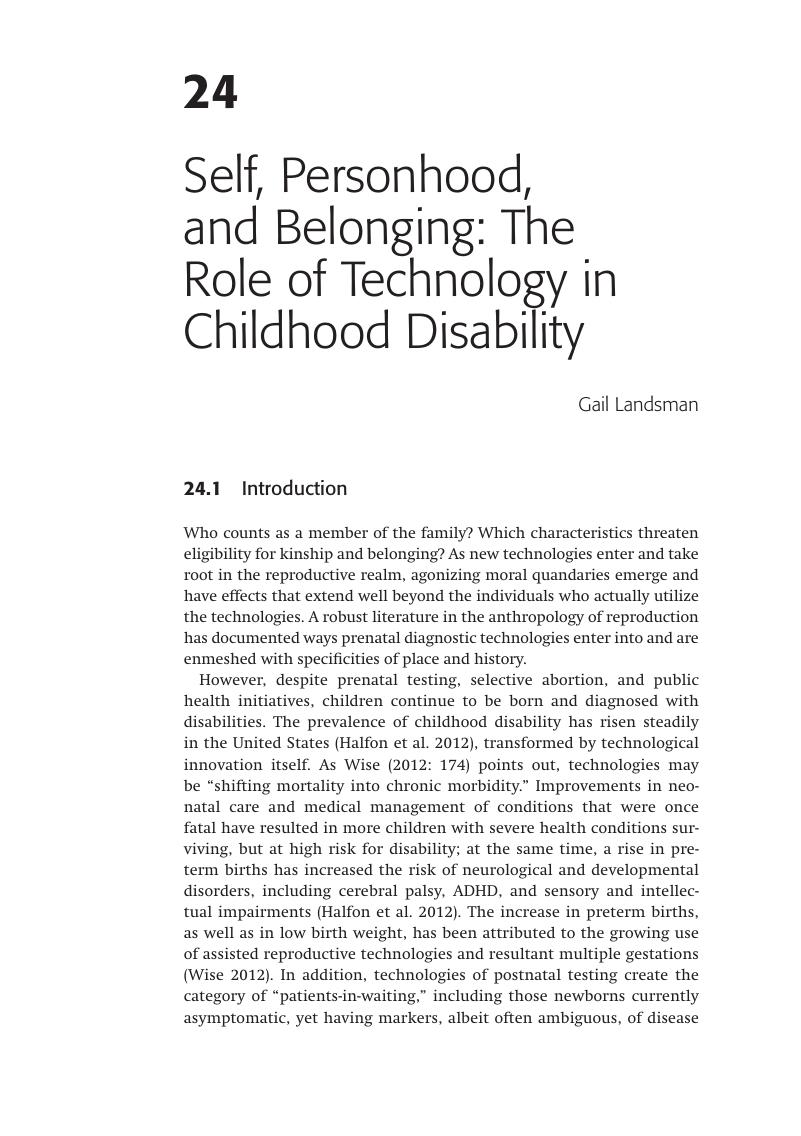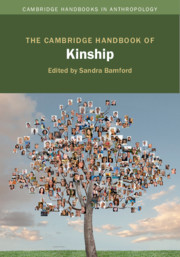Book contents
- The Cambridge Handbook of Kinship
- Cambridge Handbooks in Anthropology
- The Cambridge Handbook of Kinship
- Copyright page
- Contents
- Figures
- Tables
- Contributors
- 1 Introduction: Conceiving Kinship in the Twenty-First Century
- Part I Opening Frameworks
- Part II The (Non)Biological Basis of Relatedness
- Part III Reproducing Society: Gender, Birth, and Power
- Part IV Transnational Connections
- Part V Technological Conceptions
- 21 Surrogate Motherhood and Transforming Families
- 22 Kinship and Assisted Reproductive Technologies: A Middle Eastern Comparison
- 23 A Comparison of Kinship Understandings among Israeli and US Surrogates
- 24 Self, Personhood, and Belonging: The Role of Technology in Childhood Disability
- 25 Paid and Unpaid Labor: Pregnancy and Surrogacy in Anthropological Studies of Reproduction
- Part VI Kinship and the Nation-State
- Index
- References
24 - Self, Personhood, and Belonging: The Role of Technology in Childhood Disability
from Part V - Technological Conceptions
Published online by Cambridge University Press: 22 April 2019
- The Cambridge Handbook of Kinship
- Cambridge Handbooks in Anthropology
- The Cambridge Handbook of Kinship
- Copyright page
- Contents
- Figures
- Tables
- Contributors
- 1 Introduction: Conceiving Kinship in the Twenty-First Century
- Part I Opening Frameworks
- Part II The (Non)Biological Basis of Relatedness
- Part III Reproducing Society: Gender, Birth, and Power
- Part IV Transnational Connections
- Part V Technological Conceptions
- 21 Surrogate Motherhood and Transforming Families
- 22 Kinship and Assisted Reproductive Technologies: A Middle Eastern Comparison
- 23 A Comparison of Kinship Understandings among Israeli and US Surrogates
- 24 Self, Personhood, and Belonging: The Role of Technology in Childhood Disability
- 25 Paid and Unpaid Labor: Pregnancy and Surrogacy in Anthropological Studies of Reproduction
- Part VI Kinship and the Nation-State
- Index
- References
Summary

- Type
- Chapter
- Information
- The Cambridge Handbook of Kinship , pp. 552 - 579Publisher: Cambridge University PressPrint publication year: 2019



